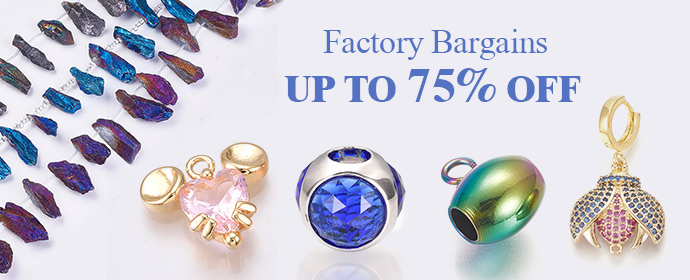Cosmetics have become the basic need in today’s daily life and everyone’s need. May it be men, women, teenage girls, and even kids and toddlers too? These cosmetics come with attractive packaging and advertising, by reputed brands of the Indian as well as the global market describing the benefits of using it. But is it safe to use products made of just chemicals and toxic ingredients? Many products are also mixed with animal fat and are recommended to use without any prior notification.
The cosmetic industry mainly depends on chemicals and animal fat as they are easily available and they are cost-friendly for the industry. The main advantage of the cosmetic industry is they are not required to mention the ingredient list of the product and the main thing is that people who buy cosmetics are charged above the level of their actual cost.
For instance: a Kajal pencil from a reputed brand will cost you about 130 to 150 rupees. A traditionally handmade kajal costs about 80 to 95 rupees and making kajal at home would just require your patience of an hour or two hours but we people end up buying the commercially branded product just for its packing and some almost fake promises.
So let us today talk about the products which can be made at home with some effort and patience and low cost and some which are available in the market with all-natural ingredients and no toxins.
To begin with Kajal, Kohl, or Surma: the commercial kajal pencil may be convenient to use but they come with toxic ingredients like lead sulfide which sometimes is more than half of the weight of kohl, galena, minium, aluminum, antimony carbon, iron and zinc compounds magnitude, zincite, sulfates, silicones, parabens, mineral oil, petroleum products heavy metals, and what not to mention are used in a basic simple kajal. As many of us know mineral oil is the main cause of cancer and according to many researchers and researches made on kajal or kohl products these products have a heavy amount of lead in them which in the long run causes brain-related issues, damage to bone marrow, anemia, and coming in direct contact to eye the toxins get easily transferred to our bloodstream and cause more damage to our body and eyes. there are many complaints after using these products that eyes getting irritated and prone to infections.
Food and drug administration [FDA] the USA, which works as the public health protection in the US has banned the use, sale, and import of kohl and its products. Lead poisoning is also the main risk associated with exposure to high levels of lead exposure being anemia, kidney problems, and neurological damages that include seizures, coma, and even resulting in death sometimes. Even low exposures to Lead may lead to learning and behavioral problems.
U.S. Food and Drug Administration.
The Center For Disease Control has set a blood level of 5 micrograms per deciliter in children as the reference level at which CDC recommends initiating public health actions.
INDIAN MYTH: There are no scientific pieces of evidence that prove using kajal does any benefit to the eyes like improving eyesight, cleansing of eyes, protecting us from cataritis, blepharitis, conjunctivitis, and other such infections. But as mentioned ancient books and age-old methods of making kajal may help to highlight the eyes and make it look more beautiful. I have tried making it at home. I was satisfied that it came to be awesome and toxin-free. I’m mentioning the methods and the one I use to make it. Kajal or kohl is made using various kinds of oils like almond oil, pure cow ghee, castor oil, mustard oil, and vitamin e capsule[it is used as a nonsmudging agent and optional ] a few crushed almonds and carom seeds .some some households use camphor also.
All we require is a basic mud lamp or Diya, a cotton wick, oil or ghee, and a plate to collect the kohl
The recipe I use to make kajal: mustard oil, cotton wick filled with crushed almonds, and carom seeds. Now fill the lamp with oil, place the filled wick in it and light it and place a plate above some height distance. After lighting the lamp it takes some minutes to start the collection of kohl. Time taken to collect the kohl depends on the amount of oil put in the lamp. After collecting the kohl, let it cool for a few minutes. Then scrape it with a spoon and collect it in a container and add just 2 drops of ghee at the beginning and a vitamin e capsule for preventing the kajal from smudging mix it well and store and it is ready to use.
If making it for kids just light a lamp of pure ghee and collect the kohl and mix with one to two drops of ghee.
If you are searching for natural kajal brands in the market then are a few names.
SOUL TREE PURE BLACK KAJAL.
ORGANIC NETRA BABY KAJAL.
SREEDHARYAM AYURVEDIC BABY KAJAL.
VAIDYANJALI KAJAL.
These are some Indian brands that traditionally make kajal and are made with natural and vegan products.
These cosmetics make us presentable in our day-to-day life and in times of despair but at the cost of our health which is put to a stake by ourselves. We on the other hand make so many efforts to keep ourselves healthy but on the other side, we don’t think for a while when buying these cosmetics and wasting both hard-earned money and our health and wellbeing. So please let me know that will you all invest in the cosmetic named kajal which just causes only harm to your most valuable organ?
I would wait for your comments, replies, and suggestions.
Recommended5 recommendationsPublished in Uncategorized



